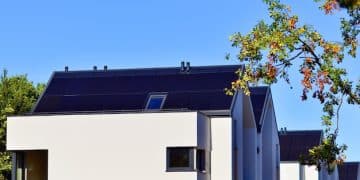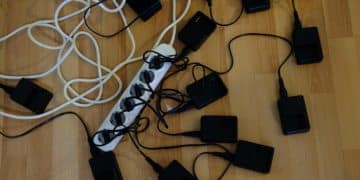Energy-Efficient Lighting Guide: Save $200 Annually with LEDs
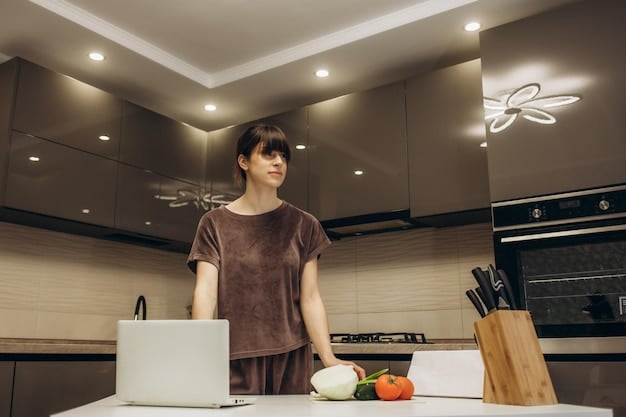
Switching to energy-efficient LED lighting can lead to significant annual savings, potentially reducing your energy bill by $200 or more through lower electricity consumption and longer lifespan compared to traditional lighting options.
Are you looking for ways to reduce your energy bill and save money? The energy-efficient lighting guide: switching to LEDs can save you $200 annually, offering a practical and effective solution to lower your energy consumption and help you save money.
Understanding Energy-Efficient Lighting
Energy-efficient lighting is a game-changer when it comes to reducing your carbon footprint and saving money. This mainly involves using lighting technologies that consume less power and last longer than traditional options.
This includes compact fluorescent lamps (CFLs) and, most notably, light-emitting diodes (LEDs). By making the switch, you’re not just brightening up your home; you’re also contributing to sustainability and reducing your energy costs.
The Basics of Energy Efficiency
Energy efficiency in lighting refers to technologies that provide the same level of brightness using significantly less electricity. Traditional incandescent bulbs convert only about 5% of the electricity they consume into light, wasting the rest as heat. Energy-efficient alternatives, like LEDs, convert a much higher percentage of electricity into light.
- Reduced Energy Consumption: Energy-efficient bulbs use a fraction of the energy compared to traditional bulbs, leading to lower electricity bills.
- Extended Lifespan: LEDs last significantly longer than incandescent bulbs, reducing the frequency of replacements.
- Environmental Impact: Lower energy consumption translates to a smaller carbon footprint, contributing to a more sustainable environment.
Overall, understanding these basics can help you make informed decisions about upgrading your home’s lighting.
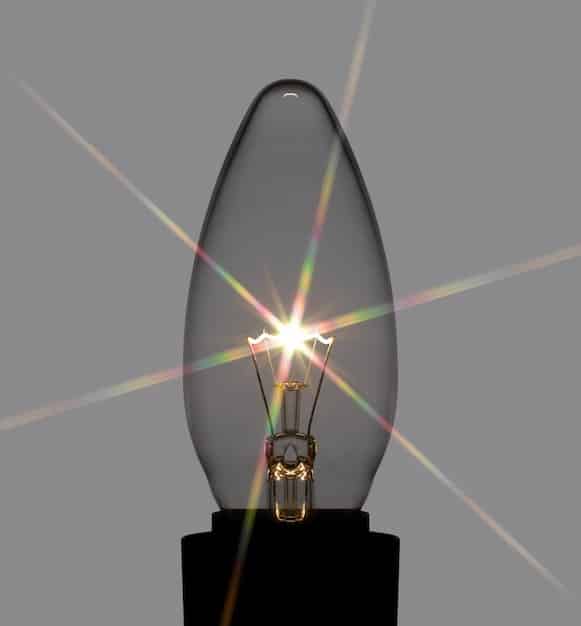
Why Choose LED Lighting?
LED lighting has revolutionized the way we illuminate our spaces. They stand out as the most energy-efficient and cost-effective option available today.
Switching to LEDs not only reduces your energy consumption but also offers numerous other benefits, making them a smart choice for any home or business.
Advantages of LEDs Over Traditional Bulbs
LEDs offer a wide range of advantages compared to traditional incandescent and fluorescent bulbs. Their energy efficiency, longevity, and versatility make them a superior lighting option.
- Energy Savings: LEDs use up to 75% less energy than incandescent bulbs.
- Long Lifespan: LEDs can last up to 25 times longer than traditional bulbs, reducing replacement costs.
- Durability: LEDs are more resistant to breakage and vibration.
- Versatility: LEDs come in a variety of colors and brightness levels, suitable for any application.
LEDs truly outshine traditional bulbs in almost every category, making them an ideal choice for modern lighting needs.
Calculating Your Potential Savings
Understanding how much you can save by switching to LEDs can be a powerful motivator. By calculating the energy consumption and cost differences between traditional bulbs and LEDs, you can see the tangible benefits of making the switch.
A simple calculation can reveal the savings you might achieve, encouraging you to invest in energy-efficient lighting.
Estimating Annual Savings
To estimate your annual savings, consider the wattage of your current bulbs, the number of hours they are used each day, and the cost of electricity. Compare this with the wattage of equivalent LED bulbs and their lifespan.
Let’s assume you have ten 60-watt incandescent bulbs that you use for 4 hours a day. These bulbs consume 240 watts (10 bulbs x 60 watts each). Over a year, this equates to 350.4 kWh (240 watts x 4 hours x 365 days). If electricity costs $0.15 per kWh, your annual cost for these bulbs is $52.56.
Now, if you replace these with 8-watt LED bulbs, the consumption drops to 80 watts. Over a year, this is 116.8 kWh, costing $17.52. The savings would be $35.04 per year for these ten bulbs alone. Extrapolating these savings across your entire home can easily lead to savings of $200 annually.
Factors Affecting Savings
Various factors can influence the actual savings you achieve, including:
- Electricity Rate: The cost of electricity in your area will directly impact your savings.
- Usage Patterns: The number of hours you use your lights each day can significantly affect your energy consumption.
- Type of Bulbs Replaced: Replacing less efficient bulbs, like incandescents, will result in greater savings compared to replacing CFLs.
These factors contribute to the overall impact of switching to LED lighting.
Choosing the Right LED Bulbs
Selecting the right LED bulbs for your home involves considering several factors to ensure they meet your lighting needs while maximizing energy efficiency.
Understanding these factors, such as brightness, color temperature, and bulb type, is crucial for making an informed decision.
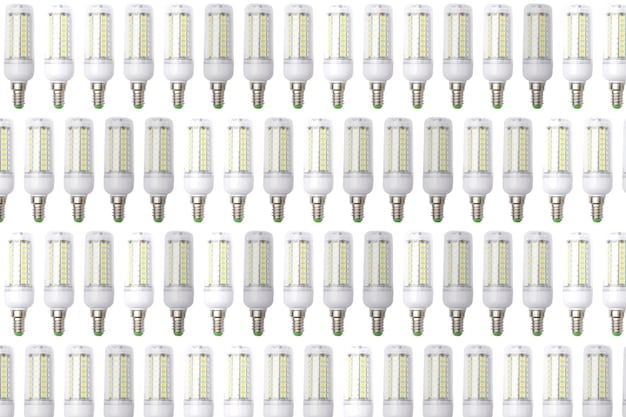
Understanding Brightness and Lumens
Brightness is measured in lumens, not watts. When switching from incandescent bulbs to LEDs, focus on lumens to get the desired level of light. For example, a 60-watt incandescent bulb produces about 800 lumens, so look for an LED bulb with a similar lumen output.
The higher the lumens, the brighter the light. Choosing the right lumen output ensures you get the desired level of illumination without wasting energy.
Color Temperature and Light Appearance
Color temperature is measured in Kelvin (K) and affects the appearance of the light. Lower Kelvin values (2700K-3000K) produce warm, yellowish light, suitable for living rooms and bedrooms. Higher Kelvin values (4000K-5000K) produce cool, white light, ideal for kitchens and workspaces.
Selecting the right color temperature can greatly impact the ambiance of your rooms, enhancing comfort and productivity.
Installation and Maintenance Tips
Installing and maintaining LED lighting is straightforward, but following a few simple tips can help ensure optimal performance and longevity.
From proper installation techniques to regular cleaning, these practices can extend the lifespan of your LEDs and maintain their brightness.
Simple Installation Guidelines
LED bulbs are typically easy to install. Simply remove the old bulb and screw in the LED replacement. However, make sure the bulb is compatible with your fixture, especially if you have dimmers. Some LEDs are not compatible with all dimmer switches.
Always turn off the power at the breaker before replacing any light bulb to avoid electric shock.
Extending the Lifespan of Your LEDs
To extend the lifespan of your LEDs, avoid using them in enclosed fixtures that trap heat. LEDs perform best in well-ventilated environments. Also, keep the bulbs clean by wiping them with a soft, dry cloth regularly.
Proper care and maintenance can help your LEDs last for many years, providing reliable and cost-effective lighting.
Government Incentives and Rebates
Many local, state, and federal governments offer incentives and rebates for energy-efficient lighting upgrades. Taking advantage of these programs can further reduce the upfront cost of switching to LEDs.
Exploring these opportunities can make your investment in energy-efficient lighting even more affordable.
- Federal Tax Credits: Check if there are any federal tax credits available for energy-efficient home improvements.
- State and Local Rebates: Many states and local utilities offer rebates for purchasing energy-efficient appliances, including LED lighting.
- Utility Company Programs: Your local utility company may offer programs that provide discounts or rebates on energy-efficient products.
By researching and utilizing these incentives, you can significantly lower the initial cost of upgrading to LED lighting.
| Key Point | Brief Description |
|---|---|
| 💡 LED Savings | Switching to LEDs can save you up to $200 annually. |
| ⏱️ Long Lifespan | LEDs last up to 25 times longer than traditional bulbs. |
| 💰 Government Incentives | Explore rebates and tax credits to lower the cost. |
| 🌡️ Color Choice | Choose the right color temperature for your home’s ambiance. |
Frequently Asked Questions (FAQ)
▼
Savings vary, but switching to LEDs can potentially save you around $200 annually. The savings depend on the number of bulbs replaced, the hours of usage, and the electricity rate. Consider replacing all your old incandescent bulbs with LEDs to maximize the savings.
▼
Yes, LED bulbs are more environmentally friendly. They consume less energy than traditional bulbs, reducing your carbon footprint. Also, they last longer, which means fewer bulbs end up in landfills. This makes them a more sustainable lighting option.
▼
When buying LED bulbs, look for the lumen output to ensure the desired brightness. Also, consider the color temperature to match the ambiance of your rooms. Finally, check for the Energy Star label to ensure the bulb meets energy efficiency standards and is eligible for rebates.
▼
Most LED bulbs can be used in any standard light fixture. However, be cautious with enclosed fixtures, as they can trap heat and shorten the lifespan of the LEDs. Also, check compatibility with dimmer switches, as not all LEDs are compatible with all dimmers. Use appropriate LED dimmers where needed.
▼
You can find rebates for LED lighting through your local utility company, state energy efficiency programs, and federal tax credits. Check the Energy Star website for a list of available rebates in your area. Contact your utility for local deals.
Conclusion
Switching to energy-efficient LED lighting is a smart move that can significantly reduce your energy bills and contribute to a more sustainable environment. By understanding the benefits, choosing the right bulbs, and taking advantage of available incentives, you can easily save $200 or more annually while enjoying high-quality, long-lasting illumination in your home.




